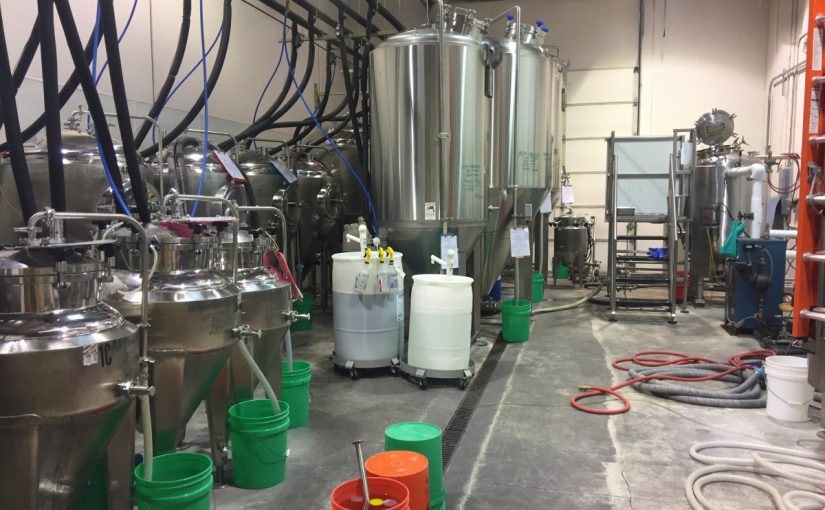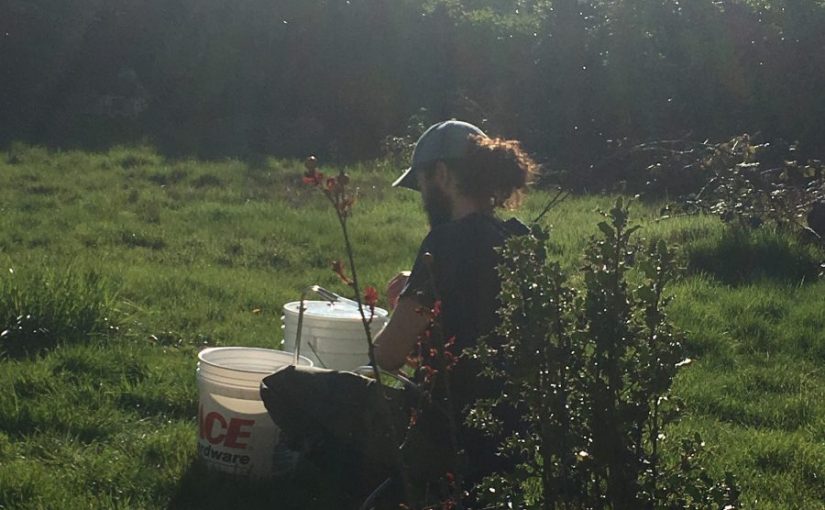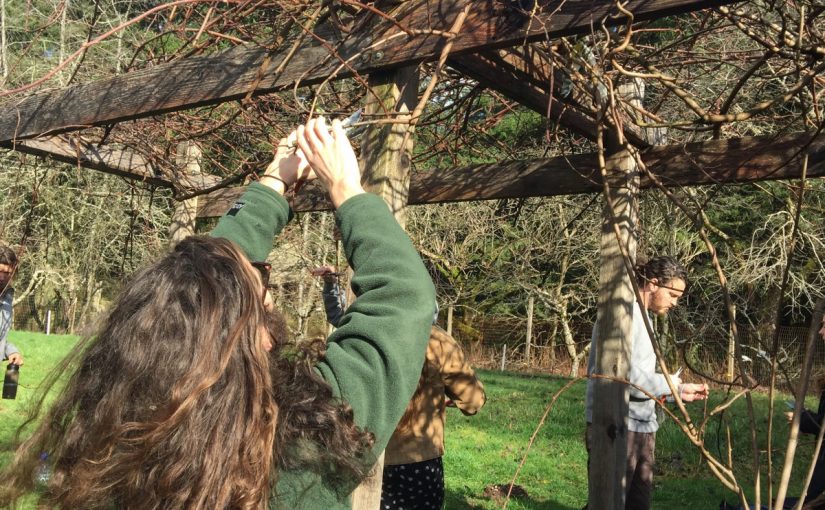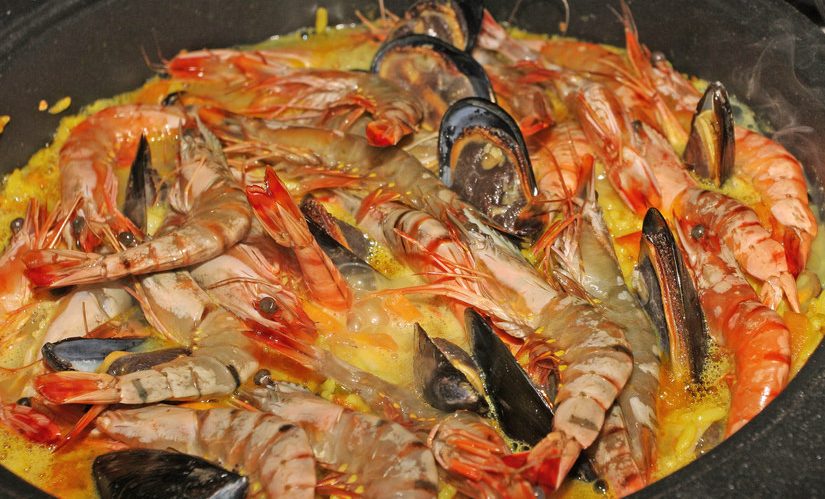https://docs.google.com/presentation/d/1ZpwxqlAe2Fc_l-pkVngwcBj7JmqAIrZYV4swD2XMilw/edit?usp=sharing
Author: bunand15
A Homebrewer’s Hop Yard and Plot of Barley
Being a self-sufficent home brewer is certainly feasible. The first, and most substantial necessity is land. Only about a half an acre of unused, sunny, flat ground is needed to grow the ingredients for twenty 10 gallon batches of beer. In addition to land, a small grain sprouting machine, and hop/grain kiln are needed (homemade plans for these in an earlier posting).
Understanding Yeast
Yeast is key to fermentation, and the reason why everyone doesn’t sit around drinking malted barley water or grape juice during times of leisure.
Yeast is a eukaryotic, single cell fungi. It is very much alive and reproduces asexually through the process of budding. A bulge is formed on the membrane of a cell, then the cell divides mitotically, detaching and creating an exact replica of the original cell. A yeast cell is around 5 to 10 microns thick, which is about 5 times the size of average bacteria.
Batch #2, All Grain IPA, My own Recipe
Since the last batch of beer (and first ever) that I brewed I have had significant time to research and determine what I want out of the finished product, and how to achieve that. The first beer I made was a simple recipe using malt extract. It was a mixture of malt extract syrup (6lbs Pilsen), dried malt extract (1lb pilsen), and about a pound of crushed barley to steep for flavor and color. Also this first recipe used only 3 ounces of hops, all the same variety (Chinook). It was an easy recipe and a good baseline for comprehending the fermenting process. At the start of the first brew I did not fully understand hop characteristics, or the importance of a proper grain bill. As I learned the intricacies of brewing I realized my mistakes from the first batch, and gained a great deal of knowledge for success in the next brew.
Pruning Hardy Kiwis
Pruning an untamed hardy kiwi plant is quite the endeavor. The kiwis on the organic farm are beyond untamed, and in need of a heavy pruning. Almost all of the canes are tangled and should first all be trimmed down to the edges of the trellis to make for easier work later. The second step is to make sure the leaders of the female plants are spaced 8 to 12 inches apart on the cordon. This will allow for proper light penetration for improved photosynthesis as well as suitable airflow to suppress fungal growth. On the mature females up to 70 percent of the last year’s growth can and should be removed to promote new growth. The canes should be pruned down with a stub left at the base for new growth opportunity. With the level of disorder that currently faces the kiwis, the best thing for the future would be to heavily prune. The trees will produce less next year, however, over time the quality of the fruit will improve, and future pruning will be easier.
The Cooking Gene
“The real history is not in the food, it’s in the people. We are working against the loss of our cultural memory; against the consequences of institutional oppression; against indiscriminate and flagrant appropriation; and against courts of public opinion that question our authenticity, maturity, and motives in the revolutionary act of clarifying and owning our past.” (Twitty, 404)
Hear the voices of a black boy captured by the Natchez, a couple of mixed African origins that can’t get along, a white woman and her black mate, a black concubine to a white overseer, tri-racial groups living in mountains and swamps, and fifty languages—from Ladino to Cherokee to Kikongo to Gaelic to French and Canary Island Spanish and Serer—and you will understand how beautifully bewildering our heritage is, and why it was impossible to birth this cuisine anywhere else on the planet. (Twitty, 163)
The southeastern states contain some of the most delicious, flavorful foods in the country. Many characterize southern, or “soul” food as American cuisine, born in the United States. Through reading The Cooking Gene, by Michael Twitty I have come to realize that southern food has deep roots and a vast multi-ethnic background. The story of southern food is multifaceted; it is built on slavery, hardships, and a diminishing hold on the recollection of heritage, while also acting as an adhesive for community, empowering those who know it’s origins. I newly understand the depth of connection between people and their food. Southern cuisine is as complex in its derivation as those who created it. Its journey has been long, although only recently has ownership begun to be accurately allocated. Sadly, a great deal of cultural information has been lost due to little recording. Twitty has traced his heritage through food and connected it with modern day genealogy technology. The intricacies of his journey have helped me to understand why southern food is also called soul food.
Malting Grains and Drying Hops
Malting is the process of sprouting a grain to allow it to reach its maximum enzymatic levels, then kilning it at a low temperature to preserve the enzymes until needed. In addition to grains, other seeds like buckwheat can be malted, and also beans if desired. Barley is the standard grain to malt mainly for its high level of enzymes that promote an easy starch-to-sugar conversion during mashing. Many people have been experimenting with using millet as a base malt, and getting great results. Alternative malting is extremely beneficial for those with gluten intolerances, and will soon be a lucrative market.
Water Chemistry and the Terroir of Water
Water is the most plenteous ingredient in brewing beer, and can change the overall flavor of the finished product depending on what minerals are present in it. Beer styles have developed diversely around the world because of the differences in local water where it is produced. It can be compared to how bagels and pizza are generally better around New York than other places. Or take the motto for Olympia beer: “It’s The Water.” (Im sure they made a decent beer at some point, years ago… maybe)
Final Thoughts for My First Batch, and Moving Forward

I just bottled my first ever batch of beer. I’m glad a used such a simple recipe to begin with; it helped me gain an understanding of the process with little stress. I now have a strong understanding of the brewing process through lectures, books, and conversations with brewers. This baseline batch was necessary to asses my problems and move forward with more complicated recipes.
Continue reading Final Thoughts for My First Batch, and Moving Forward
Restoring Heritage Grains
“Of the approximately 250,000 plant species on our planet, about 50,000 are edible, yet only 15 crops provide 90 percent of our calories. Wheat, corn, and rice provide 60 percent, yet only a tiny fraction of their vast biodiversity is grown in the modern field.” (Rogosa, 4)
“We do not need waving fields of monocropped grain like the Midwest mega-farms. Landrace wheat is a welcome addition to small scale, diversified cropping rotations. It builds soil, breaks disease cycles of vegetable crop pests and pathogens, and yields enough for a year’s supply of fresh-milled, homemade bread, or for a seed exchange, or a backyard seed company…” (Rogosa, 38)
Many producers and consumers alike regard wheat as a low value commodity crop, with little need to improve its nutritional value. Almost every culture grows and consumes wheat; some have cultivated it for over 12,000 years, making it the oldest domesticated crop. Although humans have learned a great deal through recent technological advances and industrialization, there is a singular mindset in wheat production. This mindset includes not weighing important variables, such as soil health and residual chemicals found in processed grain. Through heavy chemical use wheat is now grown uniformly, densely, and “efficiently” but is extremely weak, and lacks adequate nutrition. Education is required for small farmers to understand the benefits of landrace grains for both their land, and the health of their consumers. Knowledge of heritage grains must simultaneously be spread through communal discourse to create an accepting population of consumers.




